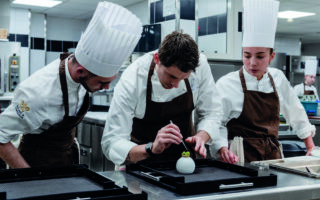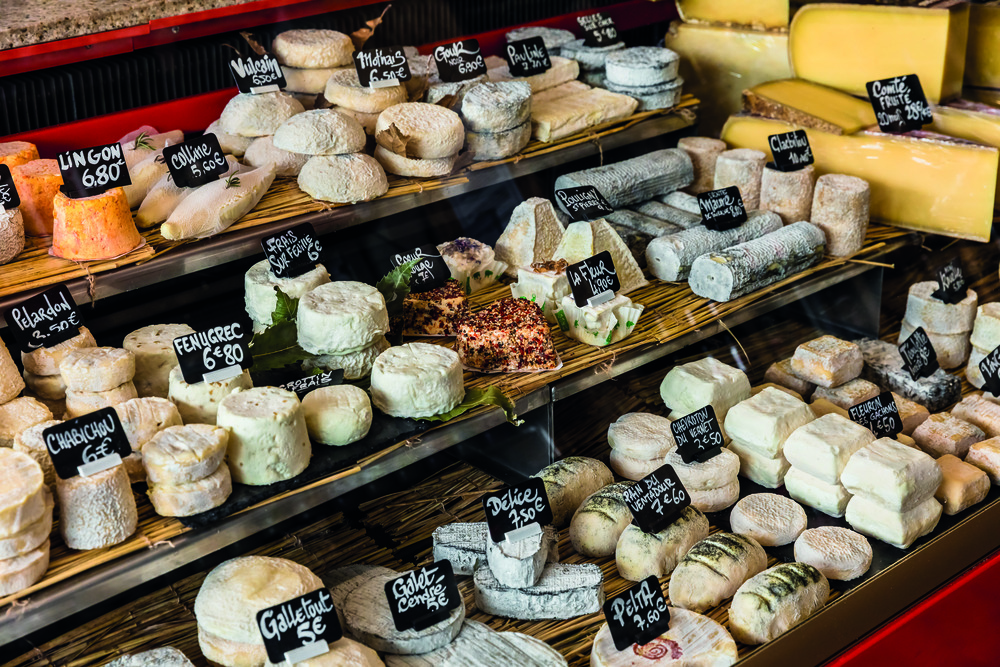
How to eat cheese: A cheesemonger’s guide
Ned Palmer, former Neal’s Yard Dairy affineur and author of A Cheesemonger’s Tour de France, shares his insights into the French art of eating cheese…
You can’t go to France and not try some of its cheeses. And there are plenty to try: that divisive old warrior Charles de Gaulle famously and rather plaintively asked, “How can one be expected to govern a nation with 246 cheeses?” This was upped in later versions of the quote to 365, but even so, that was still underestimating the true number by a considerable margin. In fact, I would argue that it is impossible to count them all since there are many local varieties from small family producers that don’t even have names.
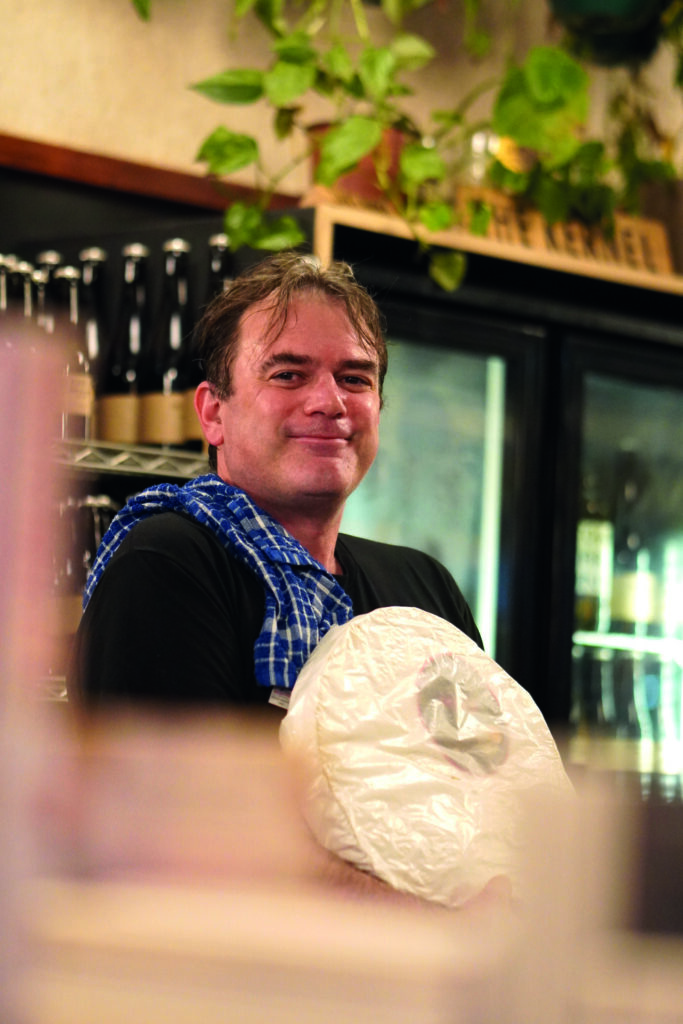
I realised this at a market in the picturesque town of Saint-Flour in the Cantal department of the Auvergne, when I asked an extravagantly hairy young farmer what his tiny little buttons of mould-ripened cheese were called. He looked at me, bemused, and with a classic Gallic shrug said, ‘chèvre?’. Which simply means ‘goat’.
Factory versions of some cheeses are produced all over the country, but the traditional versions are eminently local -characteristic products of their region or pays, an untranslatable word that could stand for the whole of France or for a hyper-local area which might be defined by the distance at which you could still hear the ringing of the bells in the village church. Eating the local cheeses is thus a great way to experience the variety and diversity of France’s numberless pays. There are the savoury and fruity notes of the mighty Comté, made in the sub-alpine Jura and named for that region’s historic name Franche-Comté or ‘Free County’, and the sweet creamy goat’s cheeses made in the rocky, sunburnt hills of Provence, like the nutty leaf-wrapped Banon. Or how about the more intense, acidic goats’ of the Loire Valley like the ashed logs of Sainte-Maure with their wrinkled rinds, and the famous Crottin, varying in age from fresh fudginess to mouth-tingling intensity? Consider the odiferous sticky-rinded Munster from the long-disputed eastern region of Alsace, and plump, luscious, golden-hued Brie from the lle de France, the ‘Garden of Kings’, with its venerable history (it was crowned ‘King of Cheeses at the Congress of Vienna in 1815).
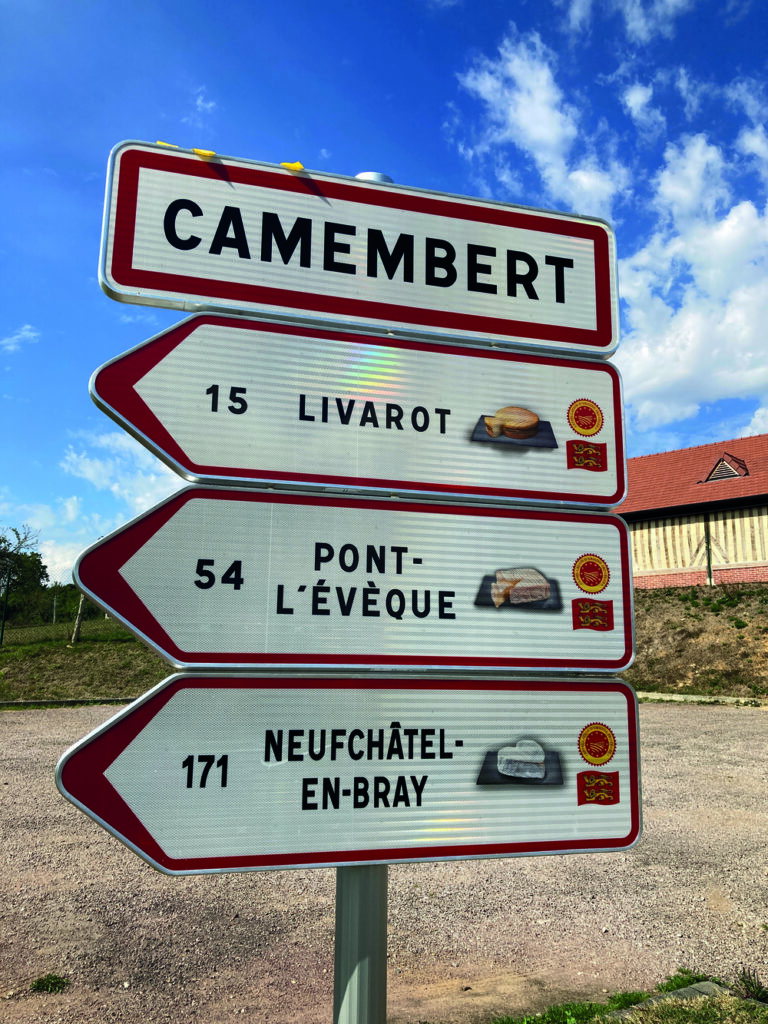
And then there’s the myriad of new-wave cheeses from Celtic Brittany. All of these, you will note, are named after places, underlining their localism, except for little Crottin whose name refers to the oldest cheeses, wizened, shrunken brown lumps that reminded their makers of an animal’s dung or crotte.
Where to buy your cheese
You could go to the supermarket, but that’s too easy. Go to a local, independent cheesemonger to find cheeses in optimal condition and served to you fresh rather than buying ones which have sat pre-cut and wrapped on a supermarket shelf.
Here too you can benefit from the craft and expertise of your fromager, who will help you to make your selection. Also the producers are more likely to get a good price and better treatment from the independent fromagerie. First, be sure to greet your fromager with a full-throated and enthusiastic ‘Bonjour madame/monsieur’. Not to do so would be the height of rudeness in France, and your cheese-buying session would be off to a most uncomfortable start.
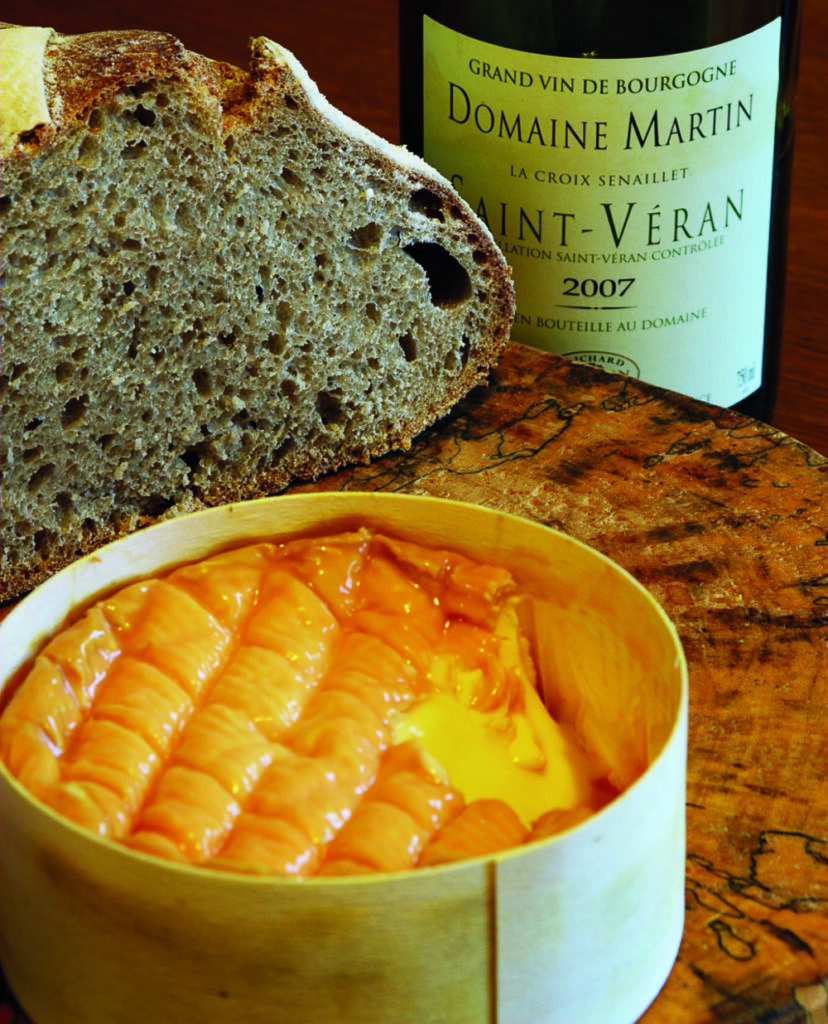
Your first visit to a proper, independent fromagerie might feel a bit overwhelming as there’s just so much cheese to choose from. As well as local cheeses, there will be the cheeses from other regions – the usual suspects in any cheese shop being Comté, Emmental, Brie and Camembert, some sort of Tomme, and one of the pungent family of washed-rinds like Munster, Époisses or Livarot.
Additionally there will usually be several ages of the same cheese; for example, you will often see three age ranges of Comté-a six-to nine-month, 12- to 18-month, and a 30-to 36-month one. Broadly speaking, the older the cheese the more intense it is, but cheese is more complex than that. Just to take the example of Comté, the young cheeses will be simple and milky, the mid-range fruity ones will have a savoury edge and notes of fresh hay and hazelnut, and the oldest will be crystalline with intense umami and a mouth-tingling finish. I happen to prefer the mid-range for its balance and complexity, but each to their own. Faced with all that variety, you could simply ask your fromager what they recommend.
Let them know if you like stronger or milder flavours, or what you are in the mood for. On a hot summer’s day, for instance, I like a spritzy, youngish goat’s cheese, while in the cooler months I favour something richer and comforting, like a firm, savoury Beaufort.
What to drink
For a general purpose wine that will go with a broad range of different cheeses, I would always go for an off-dry white wine, like a Pinot blanc, a Vouvray, a late-bottled Riesling or a luscious Gewürztraminer. You could of course, ask the fromager what they would recommend. A local wine, or indeed any other drink, is often a good guess – ‘what grows together goes together’, as the sommeliers say. Certainly I have found champagne to be an excellent partner for the pudgy little washed-rind Langres. And it goes beautifully with Brie, which was also an historic region owned by the counts of Champagne.
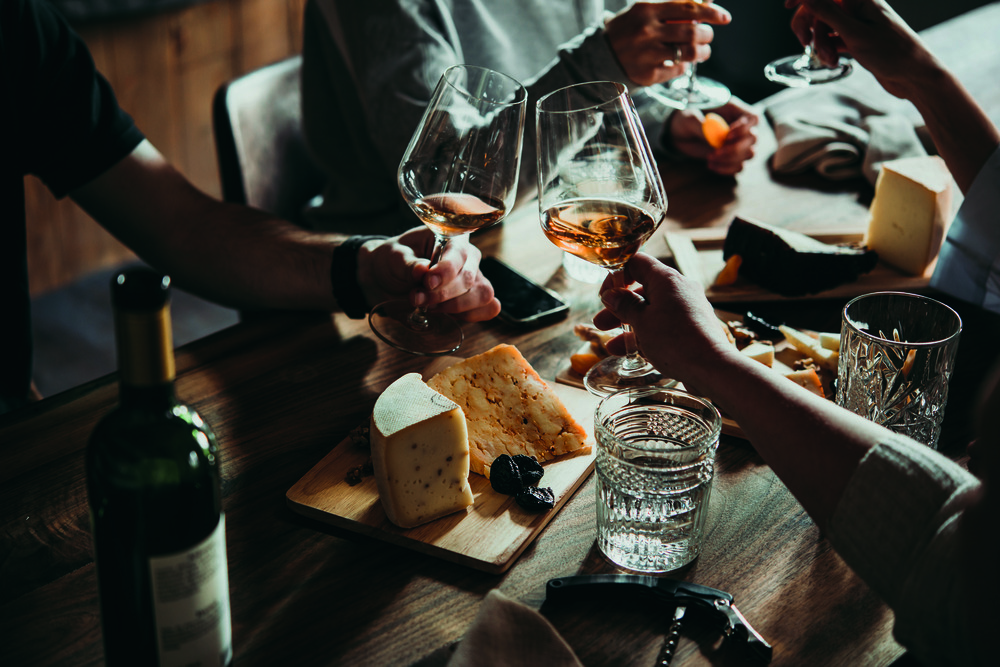
It doesn’t always work, though, especially for incomers. In Aveyron, after a long and lovely lunch with a Roquefort producer, she brought out one of her cheeses. I asked if we would be having Sauternes with it, the golden-coloured, sweet dessert wine being the cheese fan’s wine of choice for that piquant cheese. This was greeted with a look of withering contempt from the whole table. The Aveyronnais, as a point of regional pride, have their Roquefort with Marcillac made from a local grape variety called Fer Servadou. The ‘fer’ (iron) is supposed to refer to the hardness of the wood, but, appropriately, the one I tried that day had tannin as hard as a rusty nail, with a rustic, smoky note, neither of which did much for the cheese. Perhaps you need to grow up there to get it.
Eat cheese like the French
In a formal setting, the French have their cheese after the main course but before the dessert – a sensible attitude as you will still have enough appetite to enjoy the cheese. A small green salad is often served with the cheese course, the sharp crunch and fresh bitterness of the leaves making a refreshing contrast to the richness of the cheese.
Bread is the favoured medium of delivery rather than biscuits, plain so as not to distract from the flavour of the cheese, and small hunks are torn off to accompany each mouthful not too much! We are not making cheese sandwiches here.
Or you could enjoy your cheese au naturel in a more rustic, straightforward way – which would still be eminently French. Get a few local cheeses from the market, a bread of your choice and a bottle of the local vin ordinaire with an endearingly wonky label, head off to a picturesque spot not forgetting your corkscrew – and have at it. Bon appetit!

A Cheesemonger’s Tour de France by Ned Palmer is published by Profile Books, RRP £18.99.
SOME USEFUL PHRASES
- What is in season? – Ce qui est de saison aujourd’hui?
- What are the local cheeses? – Quels sont les fromages locaux?
- What do you recommend? – Que recommandez-vous?
- I like strong flavours – J’aime les goûts forts
- I prefer mild flavours – Je préfère les saveurs douces
- A slice of – Une tranche de
- A little more/less… – Un peu plus/moins
- Half a… – Un demi
- A quarter of a… – Un quart
- What should I drink with that cheese? – Que dois-je boire avec ce fromage?
Looking for more French food and drink content?
In our magazine we offer a whirlwind tour of the best gastronomic destinations. Discover La Belle France’s renowned markets, quirkiest food festivals, most indulgent restaurants and foodie experiences.
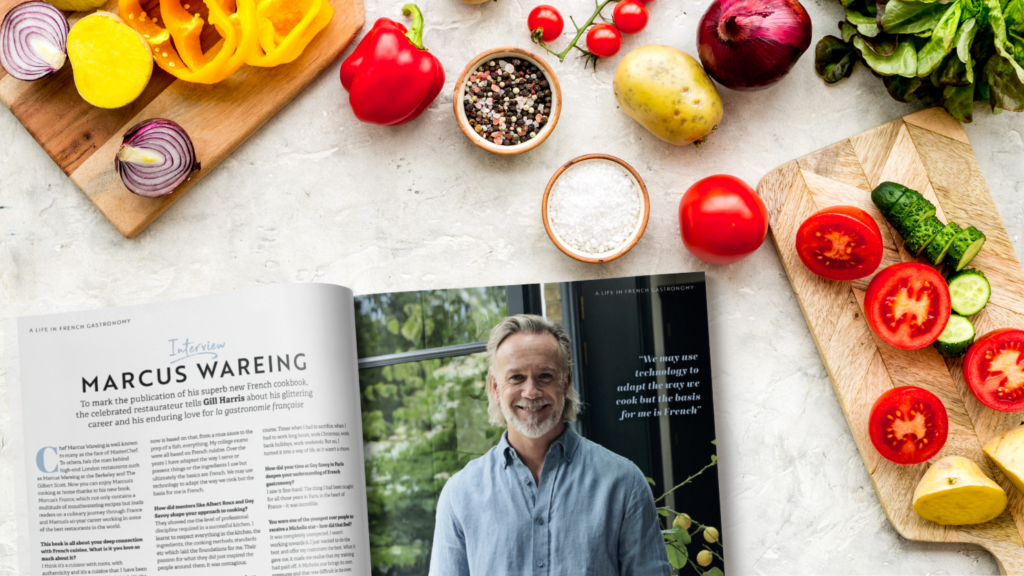
Lead photo credit : Photo: Shutterstock
Share to: Facebook Twitter LinkedIn Email
More in Cheese, Cheesemonger


